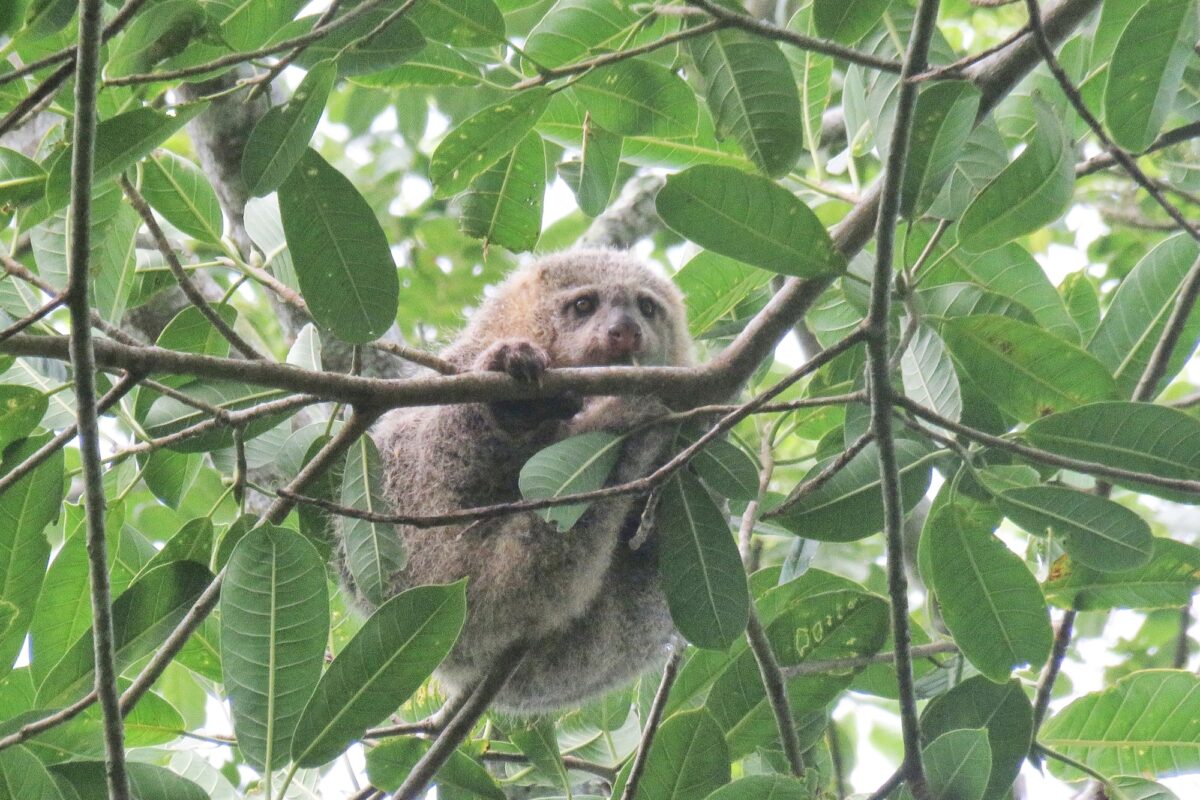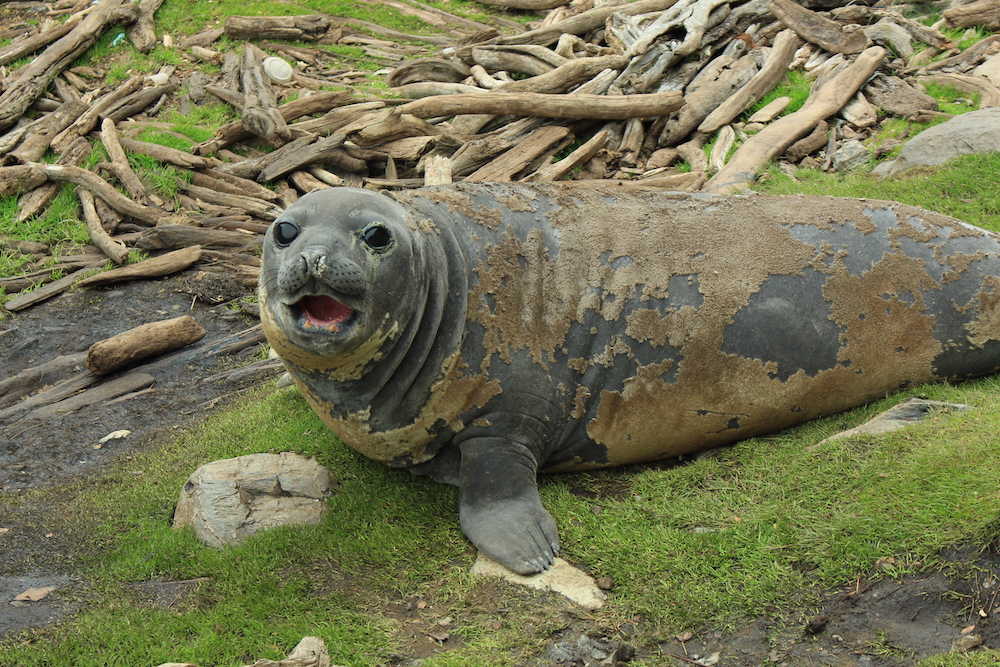- A new study has revealed that the endangered bear cuscus in South Sulawesi occupies a highly fragmented and shrinking habitat, with less than 1% of surveyed areas deemed suitable, largely due to poaching, mining expansion and forest loss.
- Despite being previously protected, the species was excluded from Indonesia’s 2018 protected species list, and researchers argue this oversight must be corrected given the animal’s vulnerability and ecological importance.
- The study also highlights the cuscus’ broader scientific significance as one of the few marsupials in western Wallacea, as well as its cultural and emotional value to local communities that have learned to coexist with it.
- Experts and the study’s authors urge stronger habitat protection, stricter environmental controls and greater public engagement to ensure the species’ survival.
A new study has shown the first habitat suitability model for the endangered bear cuscus in Indonesia’s South Sulawesi, showing its limited and fragmented range, much of which is threatened by mining and poaching, and calling for increased legal protection and landscape connectivity.
The population of the bear cuscus (Ailurops ursinus), one of the four nocturnal marsupials endemic to Sulawesi, is now scattered and disconnected from each other across the declining forests of the island, according to the paper by two Indonesian researchers published in May on the journal Oryx. The research found poaching and mining operations to be the most imminent threats to the survival of the cuscus, which the authors have described to be an overlooked potential flagship species.
“Today, unfortunately this bear cuscus is no longer included as a protected species,” Siti Nurleily Marliana, a conservation ecology Ph.D. from the University of Gadjah Mada who is one of two authors of the paper, wrote in an email to Mongabay.

The researchers collected data from October 2020 to January 2021 in the protected areas of Bantimurung Bulusaraung National Park and Hasanuddin University Educational Forest in South Sulawesi — spanning a total of 143,682 hectares (355,000 acres) — which are key habitats for the bear cuscus. They also used inventory data from a 2019 survey of the species in the national park. However, the study noted that this bear cuscus also inhabited several large protected areas of more than 200,000 hectares (494,000 acres) in North and Central Sulawesi, separated populations from those in South Sulawesi.
In South Sulawesi, they found that only 12,119 hectares (30,000 acres), or less than 1% of the total studied area, was considered suitable habitat for the cuscus, and much of which was found in small, often disconnected patches. A total of 209 bear cuscus encounters were recorded, including 16 direct sightings and 193 indirect signs, such as feeding remains, claw marks, local guide reports, park inventory data and vocalizations, according to the paper.
Their model showed that the species’ potential distribution was mainly within protection forests, which had a much greater extent than conservation forests. The study said that people were the species’ main predator, given the absence of large mammalian carnivores in Sulawesi forests.
“There continues to be consistent demand for bear cuscus meat at bushmeat markets,” the paper read.
The researchers also found that land use change for mining operations (mainly limestone and marble for a cement company) increased sixfold from 2005-19 with small-scale mining by local people being reportedly widespread. According to the paper, the southern part of South Sulawesi has lost 12.5% of its forests between 2000 and 2023, with more than half of this decline occurring since 2015, preventing northward dispersal and restricting the species to a fraction of the province’s protected forests.
The A. ursinus was legally protected in Indonesia from 1999 to 2018, even after its reclassification from the name Phalanger ursinus in 1987. However, when the government updated its list of protected species in 2018, only A. melanotis — a bear cuscus species listed as critically endangered by the IUCN and found only on the Talaud and Sangihe islands off North Sulawesi — was included. According to the study’s authors, A. ursinus was not proposed for protection by Indonesia’s scientific authority at the time, LIPI (now BRIN), despite its broad distribution and growing threats to its survival.
“Our findings indicate the bear cuscus should be considered for legal protection because of habitat fragmentation caused by settlement expansion and resource exploitation,” wrote Rahmia Nugraha, a conservation ecology researcher from UGM and co-author of the paper.


Rahmia said her team had presented their findings to the agency of the Bantimurung Bulusaraung National Park in 2021 and received positive feedback from the agency’s head saying they would work to prioritize conservation of the bear cuscus in the coming years.
The new bear cuscus study has provided useful insights for wildlife conservation practitioners to beef up protection of the remaining suitable habitats for the species, according to Johny S. Tasirin, conservation ecologist from North Sulawesi’s University of Sam Ratulangi, who was not involved in the research but evaluated the findings per Mongabay’s request.
Johny said the bear cuscus held key scientific value as one of the few marsupials, relatives of kangaroos, found as far west as Sulawesi, providing researchers knowledge about species evolution and biogeography in the Australasia region.
He added that the species had cultural and emotional relevance for human beings not only as it was once an accessible protein source for traditional communities, but also its presence in the wild might improve human well-being, especially in areas where locals have learned to coexist with and protect it.
“These points should be enough for our [conservation] officials to protect this cuscus, especially with its population estimate already critical,” Johny told Mongabay in an interview. He also suggested that more research should be done to understand more about the species, for instance, pertaining to its feeding habits.
The authors of the study and Johny agreed that officials must enforce stronger protection for the habitats, implement stricter environmental assessments for activities that could further decrease landscape and forest connectivity for wildlife. Efforts to raise awareness and educate the public about bear cuscus conservation must also be implemented amid the current lack of legal protection for the species, according to the experts.
“Even though threats of poaching and forest encroachment persist, the public actually are quite open and receptive to being involved in conservation when they are provided with the right information,” Rahmia said.

Basten Gokkon is a senior staff writer for Indonesia at Mongabay. Find him on 𝕏@bgokkon.
See related:
To win island-wide conservation, Indonesia’s Talaud bear cuscus needs to win hearts
Citation:
Nugraha, R., & Marliana, S. N. (2025). A species under siege: modelling habitat suitability for the bear cuscus Ailurops ursinus in South Sulawesi. Oryx, 1-12. doi:10.1017/S0030605324001406
FEEDBACK:Use this form to send a message to the author of this post. If you want to post a public comment, you can do that at the bottom of the page.



